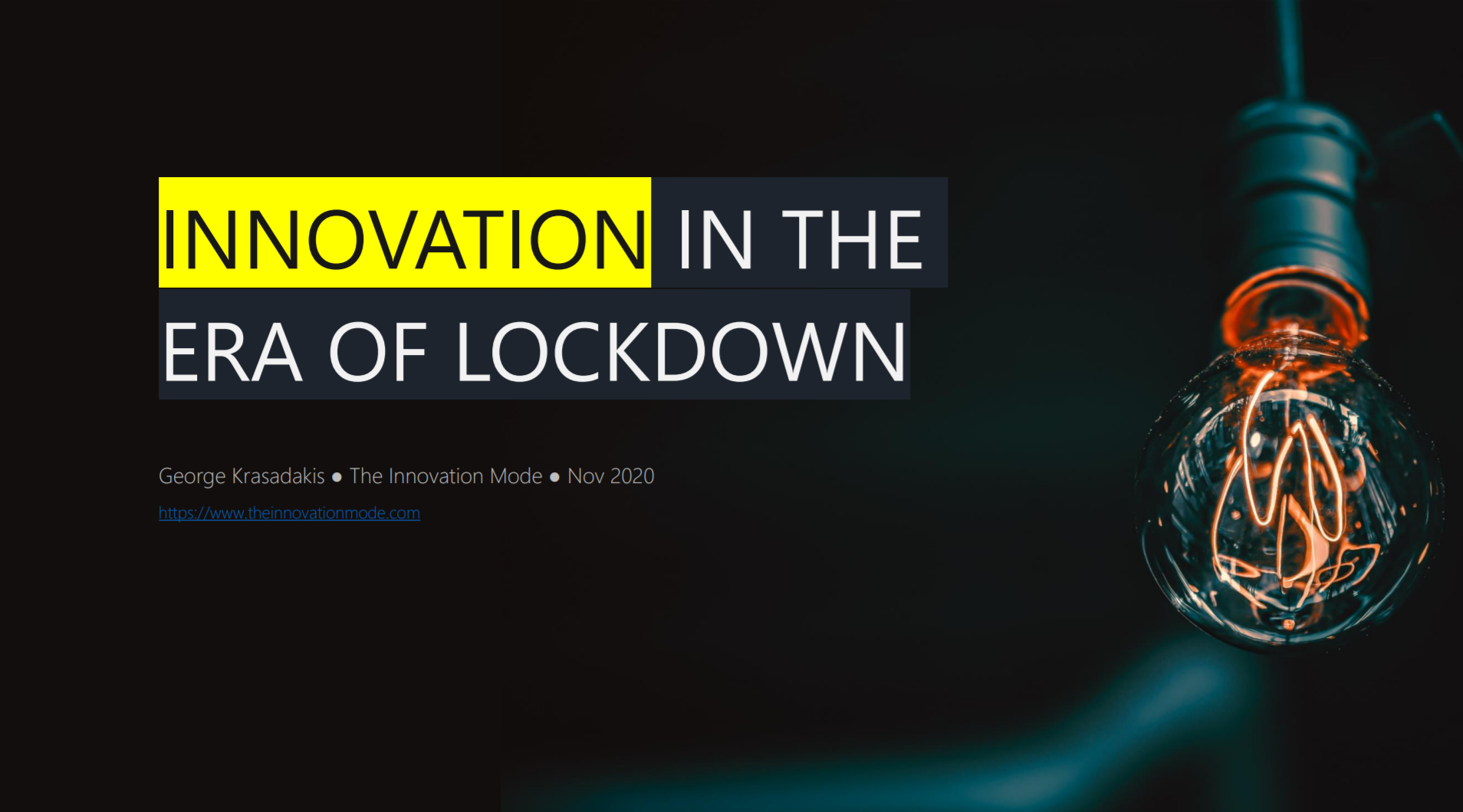Managing ideas: how to build (or select) a great ideation platform
What makes a good ideation platform? What are the key principles and essential features?
Sticky notes are great for quickly capturing ideas - they also help the team look busy and super productive :) But, when it comes to an ideation channel, you need some serious technology to capture, process, and diffuse ideas within your corporation.
There are several commercial ideation platforms out there, which are typically offered as-a-service. You can always consider developing an in-house solution, but this is typically a risky and expensive path.
Regardless of the approach your ideation technology and processes must, not only handle ideas but also encourage idea submission and collaboration. A good ideation platform should be perceived as an always-on ideas channel, always ready to accept and process ideas. It should be able to intelligently handle them, and ensure they are discoverable, and manageable by the right teams, in the right context.
Check also: How to become a great Product Manager
The following points reflect some key principles of an effective ideation channel. It is the set of characteristics that can help you design or select an idea management platform:
1. Always accessible
A good ideation channel should be always-on, and always open to ideas. In many cases, employees generate ideas as a response to a ‘call to innovate’. Typical examples include hackathons, brainstorming sessions, or programming challenges. But, employees should be also encouraged to randomly submit ideas — not necessarily as a result of an event or a call-to-action.
The ideation channel should be able to handle both supervised and unsupervised ideation processes
2. Everlasting ideas
The technology should allow ideas to be always accessible and discoverable, in the right business context. The principle here is that ideas should not expire, or get auto-archived — unless the originator wishes to withdraw them. Ideas should be considered always ‘alive’, ready to be re-discovered by the right team, in the right context, at the right time.
Instead of deleting or filtering-out ideas to reduce the ‘noise’, you can prioritize them intelligently, against different business objectives and timelines
Check also: our unique Innovation Toolkit - a collection of seven innovation templates that empower teams to frame problems, shape ideas, run hackathons, and more.
3. Simplicity over bureaucracy
Strict rules, multiple checkpoints and aggressive deadlines can kill innovation!
The ideation channel and the underlying processes must be flexible, adaptive, and efficient. The system should be able to understand the content submitted by the user, and automatically attach the right context. This context understanding is then used to empower discovery, communication, and collaboration strategies.
What if the ‘big idea’ comes out of context or after the deadline?
4. ‘Seamless’ idea capture
The technology should be able to handle an idea, even if it is described through a plain block of text. Using Natural Language Processing components, modern systems can automatically process unstructured text, extract the entities, and retrieve the context.
Less structure and rules; More intelligent post-processing, entity extraction and automated handling
In more advanced scenarios, the system could automatically recommend optimized titles, tagging, and classification of the idea. At the same time, this process could enrich the underlying knowledge base, the ontology, the patterns, and other important metadata.
Check also: Is this a prototype or an MVP? Well, it’s a proof of concept :)
5. Context is optional
An idea may be submitted as an outcome of a particular event. This could be an ideation contest, a brainstorming session, or a ‘call to innovate’ by the leadership. In such cases, ideas come with reference to a specific context: the source event, the topics, certain objectives, and problems to be solved.
A good ideation platform should accept and handle ideas with, or without context
In other cases, the idea can be randomly generated, without an obvious trigger or context; it could be an ad-hoc discovery, a new product concept, a novel feature for an existing product, a process improvement, and so on. The ideation channel should be able to effectively handle these ‘out of context’ ideas — for instance, by notifying the right teams or stakeholders, or by inviting the community of innovators for feedback and contribution.
Check also: our unique Innovation Toolkit - a collection of seven innovation templates that empower teams to frame problems, shape ideas, run hackathons, and more.
6. Transparency
The ideation channel must provide full transparency on the underlying business rules and processes. Users should be able to access the detailed history of their ideas, including all the changes and decision points. The sequence of events, collaboration activity, prioritization, and other significant updates must be clearly visible and accessible.
7. Discoverability
Ideas should be easily discoverable via both search and recommendation functions.
The ideation channel should be able to process signals, extract the business context, and use it to make intelligent, contextual and timely idea recommendations
Users such as the Chief Product Officer, Product Managers, and Engineers, should be able to instantly query the ‘ideas store’ using natural language: search operations should be based on full-text-search, semantic matching of ideas, and measures of relevance.
The idea management system could implicitly personalize the search experience, by using user’s profile, history and role in the company
In a less obvious scenario, the system should be capable of capturing the business context and trigger recommendations — autonomously. For instance, your ‘ideas store’ could be connected with your product backlog and thus it can be aware of the context of your product development efforts. Having this context, the intelligent ideation channel would be able to recommend highly-relevant and fresh ideas to different product owners: a great way to empower the overall product development process.
A modern system, could autonomously recommend highly relevant ideas, to the right teams, at the right time
In a more complex scenario, the idea management system uses the business context to identify key users, who could significantly contribute to the particular product. The key users could be ‘top performers’, based on historical data on relevant idea generation. Then, it recommends the key users to the product owner, as potential contributors.
Discoverability is much more than a powerful search engine
8. Controlled anonymity
A good idea management system should accept ideas with conditional anonymity, based on a time frame or other conditions. This allows the owner to ‘test’ the idea, and capture initial feedback and thoughts — a great way to minimize the bias observed when the owner of the idea is known upfront, and visible to the reviewers.
9. Idea handling
A good ideation channel should provide advanced operations such as idea merge, combine, and split.
Whenever a new idea is submitted, specialized components analyse its similarity against other entries in the ‘ideas store’
If a strong similarity is identified, the users will be prompted to consider merging those similar ideas. In such a case, the idea management system needs to provide idea versioning mechanisms. The detailed history and references to the previously stand-alone ideas are also a key requirement here.
Similarity with existing ideas, can be identified at editing time, thus preventing unnecessary processing and communication cycles
Another similarity-driven scenario is the idea-grouping operation. In this case, the system identifies again strong similarity among a set of ideas. But, it also recognizes the difference in the proposed solution — the actionable part of the idea. Hence, the prompt is to ‘extend the original idea’ through a ‘grouping operation’, under a master idea.
Finally, a split operation could be proposed when an idea is too complex, or covers multiple problems and use cases.
→ Check also: our unique Innovation Toolkit - a collection of seven innovation templates that empower teams to frame problems, shape ideas, run hackathons, and more.
10. Collaboration
Collaboration is an essential aspect of a ‘healthy innovation culture’. A good ideation channel, must promote collaboration, and provide the functionality to allow users to easily and effectively share their thoughts and opinions. This drives knowledge exchange and value creation in reference to a particular idea.
11. Team formation
As soon as an idea attracts interest, its owner might need to form a team to further explore the concept. This could happen informally (externally to the ideation system) or formally by setting up the team within the ideation channel. In the latter case, the ideation channel could also recommend the right colleagues to consider inviting. It could also support the end-to-end invitation process to simplify the actual formation of the team.
12. Idea versioning
The ideation channel should be capable of maintaining a history of changes, and properly version the idea throughout its life cycle. This also enables insights along with a clear representation of the history of the idea — including all the major updates and important decisions.
13. Intelligent notification
The major stakeholders in the idea handling process, are the idea originator, the contributors, and the business owners. In large corporations, the identification of the right stakeholders could become complicated — for example, handling a high-potential, complex business idea might require input from the CPO, Product managers, Commercial managers, R&D technologists, and even legal experts if there are IP opportunities.
Each stakeholder, is notified for relevant-only ideas, based on the most appropriate template and the right level of detail
A modern innovation management platform should be able to capture the hierarchy of the corporation, its inner structures, and particular roles. This is the source of important metadata, allowing the system to automatically identify the right stakeholders for a given idea.
When a new idea is submitted, the system can automatically raise personalized notifications to the right stakeholders
This process could become even more personalized, by identifying the most appropriate call-to-action and communication templates.
14. Business Reporting
A good idea management system must provide accurate reporting and insights. Executives should be able to instantly capture the levels of activity, along with the right KPIs, across multiple dimensions. A set of well-defined performance dashboards need to be there, to cover these analytical needs.
15. Information sharing
Modern ideation platforms need to be open, to expose functionality and data through standardized APIs: ideas, process performance, business insights, and other objects, need to be securely exposed to other corporate systems.
For example, a smart corporate building could consume the ideation APIs, to support several intelligent, interactive scenarios. For instance, to retrieve and present the most recent ideation activities on selected, approved screens. Or, share the most active ‘ideation users of the month’, via a dynamic email signature. Or, dynamically generate ideation activity summary, as part of a regular newsletter targeting subscribed users.
In a gamification context, ‘leaderboards’ of top-performing users could be provided for visualization through integrated systems
The above principles and functional scenarios should be considered in the right context: not all of the items have the same importance, while different prioritization is expected, depending on the industry, the structure, and the size of the company.
As originally published in Startup Grind; Image by OpenClipart-Vectors from Pixabay
Check also: our unique Innovation Toolkit - a collection of seven innovation templates that empower teams to frame problems, shape ideas, run hackathons and more.








An amazing collection of thoughts on the topic of corporate innovation, from 60 Leaders — Chief Innovation Officers, CxOs, academics, technologists, innovation experts, entrepreneurs, thought leaders, and start-up founders — across industries and geographies.